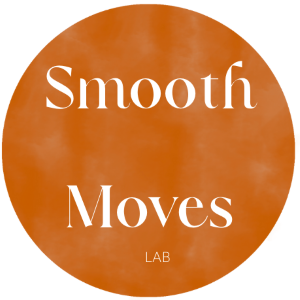Moshe Feldenkrais
“Make the impossible possible, the possible easy and the easy elegant” - Moshe Feldenkrais
Moshe Feldenkrais (1904-84), was a gifted polymath who, over a lifetime, integrated many of his experiences into his evolving Feldenkrais method. He was tutor, martial artist, engineer, student of human development and of neuroscience. A persistent knee injury set him on a lifelong exploration of the relationship between movement, awareness and healing. Over time, first for himself, then for others, he developed these enquiries into his method.
Feldenkrais worked with people in a wide range of situations - from infants with cerebral palsy to performers such as violinist Yehudi Menuhin and dramatist Peter Brook. He collaborated with thinkers from a range of disciplines. The breadth and precision of Dr Feldenkrais’ work has seen it applied in neurology, psychology, performing arts, sports and rehabilitation.
The Feldenkrais method
“Movement is life. Life is a process. Improve the quality of the process and you improve the quality of life itself.” - Moshe Feldenkrais
The twin aims of the method, to help body and mind
The Feldenkrais Method can be seen as a body-and-mind method for personal growth.
Many people are first drawn to it for its practicality and effectiveness in improving movement. Someone coming to their first session is struck by a difference in how they experience their body. Tension, stiffness and lack of co-ordination disappear to be replaced with a more free flowing way of moving.
It also has larger intents…to provide a practice for healing and fulfilling the potential of all humans. To this end, as practitioners, we work without judgement; we witness the person and accept them as they are. We work with sensitivity to similarity and difference.
How does the Feldenkrais method work to help people?
Quick answer
Watch this video which puts it better than many words can! (Video from Michael McCann)
Longer answer
It uses our brain’s capacity to learn - at any age. In recent years, this phenomenon has been increasingly studied in the field of neuroplasticity.
Feldenkrais took inspiration from the ‘organic’ way in which babies learn to move themselves, adapt to gravity and master the early motor skills of rolling, sitting, creeping, crawling, standing and walking. This all happens without any overt teaching and usually with minimum fuss. The infant initially makes random movements. These produce sensations that the baby notices and which the brain starts to organise into more intentional movements in a sensory-motor feedback loop. The baby learns best when she is free to experience pleasure and satisfaction alongside the possibility of sometimes failing.
With his own injury, and then with other people, Feldenkrais set about reproducing this sensory-motor learning of babies as a way to address his own and others’ faulty learning. He was able to learn to ‘use himself’ better to eradicate the knee pain and incapacity, in spite of structural damage in the area that he had been advised required surgery. He guided himself and others to sense the difference between movements that lead to stiffness or pain and those easy movements that feel pleasurable and effective.
With his embodied experience of martial arts and his theoretical understanding of motor development, neuroscience and engineering, he systematically created thousands of movement lessons called Awareness Through Movement®.
In parallel, he developed a hands-on way of working with individuals he called Functional Integration®.
How is the method related to the wider field of somatics?
Feldenkrais is one of many somatic practices that prioritise people’s own inner experience and sensations as a means to learn from the inside-out how to move more easily, become pain free, recover well from injury, find new options in place of restricting habits and live with greater vitality and expressiveness.
In the late 19th and 20th centuries, the so-called somatic pioneers created experiential, body-based methods of bodywork (like the Alexander Technique, Rolfing® and the Trager Approach), of movement (like Ideokinesis) or of both bodywork and movement (like the Feldenkrais Method®). Their roots were in philosophy (phenomenology, opposition to dualism), experience of eastern body practices (yoga, tai chi, judo), dance (Isadora Duncan) and psychology. They are gathering new attention today for their effectiveness at taking advantage of the brain’s capacity for neuroplasticity (see books by Norman Doidge) and span a number of different fields.
Somatic movement and dance practices include…
Awareness Through Movement® (Feldenkrais Method®)
Contact Improvisation
Hanna Somatics, formulated by Feldenkrais student, Thomas Hanna
Bones for Life, developed by Feldenkrais practitioner, Ruthy Alon
Child Space method, developed by Feldenkrais practitioner Chava Shelhav
Somatic bodywork methods include…
Alexander Technique
Functional Integration® (Feldenkrais Method®)
Body-Mind Centering®
Rolfing® Structural Integration
Rosen Method Bodywork
Trager® Approach
Somatic psychology practices include…
Emotional Freedom Technique (EFT)
Eye Movement Desensitisation and Reprocessing (EMDR)
Somatic Experiencing®
Tension & Trauma Releasing Exercises (TRE®)

